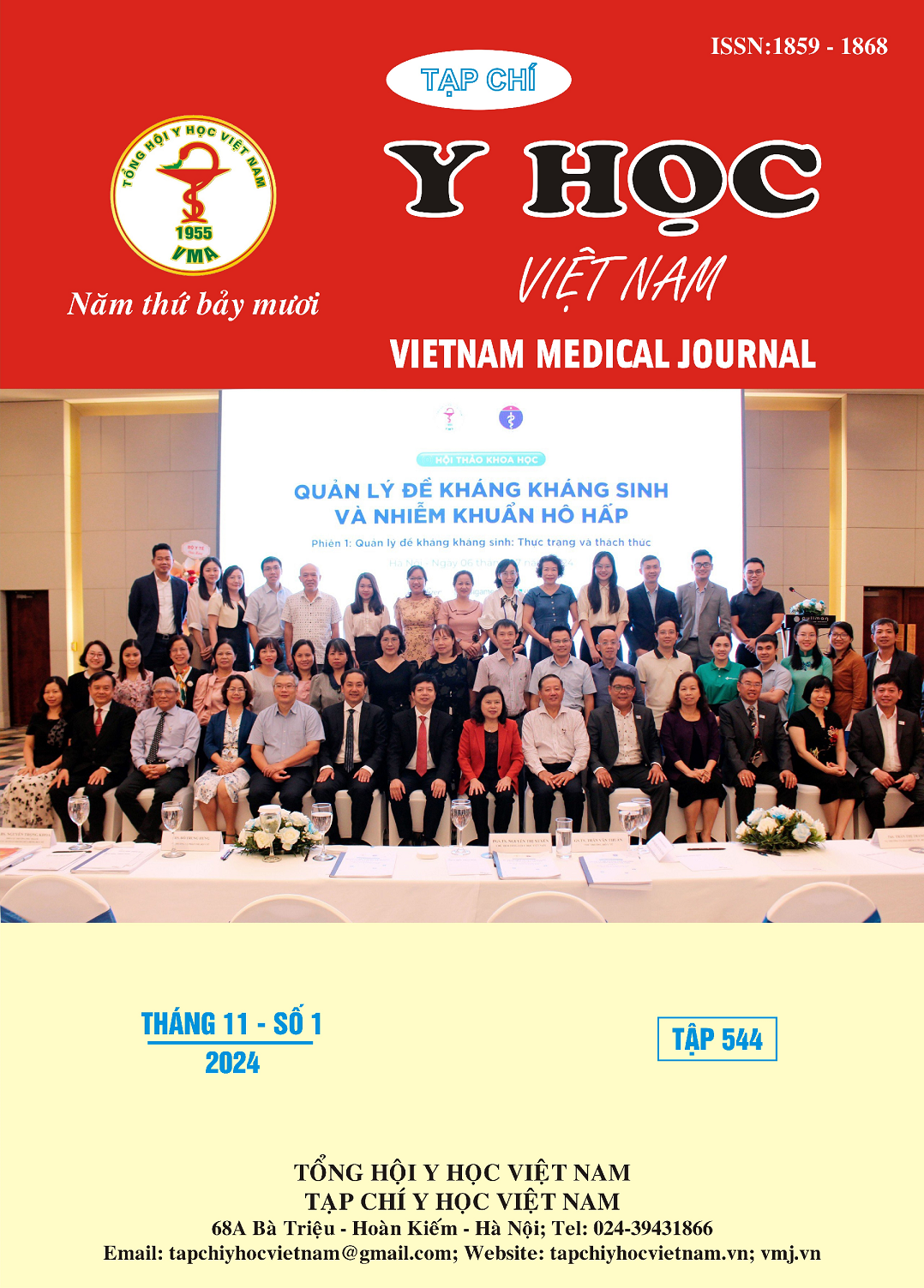ANTIMICROBIAL CHARACTERISTICS OF MYCOPLASMA ISOLATED IN NATIONAL HOSPITAL OF DERMATOLOGY AND VENEREOLOGY
Main Article Content
Abstract
Mycoplasma hominis and Ureaplasma urealyticum (collectively called Mycoplasma) are pathogenic bacteria responsible for various genitourinary infections in both males and females. These bacteria inherently exhibit resistance to many antibiotics and are showing increasing resistance to the others commonly used for treatment. Methods: This cross-sectional study aimed to determine the infection rate and antibiotic resistance profile of Mycoplasma strains isolated at the National Hospital of Dermatology and Venereology in 2022. Results: A total of 314 genital specimens were collected and analyzed, yielding an overall Mycoplasma positivity rate of 25.8% (81/314). Of these, 3 samples were single infected with M. hominis, 53 with U. urealyticum, and 25 presented co-infection with both species. Age under 23 and female gender were identified as independent factors associated with an increased risk of infection. Among the single infected U. urealyticum isolates, the highest susceptibility was observed for pristinamycin (100%), josamycin (98.1%), and doxycycline (96.2%), while resistance was highest against ciprofloxacin (58.5%) and ofloxacin (39.6%). None of the M. hominis isolates were susceptible to ofloxacin or erythromycin, and all were sensitive to doxycycline, josamycin, and tetracycline. In co-infected samples, both bacteria were most susceptible to pristinamycin (72.0%) and doxycycline (60.0%), and exhibited the highest resistance rates against ciprofloxacin (96.0%), erythromycin (84.0%), and ofloxacin (80.0%). Notably, five samples demonstrated resistance to all tested antibiotics. Conclusion: The increasing antibiotic resistance in Mycoplasma, particularly against commonly used agents, presents significant challenges in the treatment of genitourinary infections caused by these pathogens
Article Details
Keywords
antimicrobial resistance, Mycoplasma, Mycoplasma hominis, Ureaplasma urealyticum, National hospital of Dermatology and Venereology.
References
2. Leli, C., et al., Prevalence and antimicrobial susceptibility of Ureaplasma urealyticum and Mycoplasma hominis in a population of Italian and immigrant outpatients. Infez Med, 2012. 20(2): p. 82-7.
3. Song, J., et al., Prevalence and antibiotics resistance of Ureaplasma species and Mycoplasma hominis in Hangzhou, China, from 2013 to 2019. Front Microbiol, 2022. 13: p. 982429.
4. Redelinghuys, M.J., et al., Antimicrobial susceptibility patterns of Ureaplasma species and Mycoplasma hominis in pregnant women. BMC Infect Dis, 2014. 14: p. 171.
5. Lee, M.Y., et al., Prevalence and Antibiotic Susceptibility of Mycoplasma hominis and Ureaplasma urealyticum in Pregnant Women. Yonsei Med J, 2016. 57(5): p. 1271-5.
6. Hoàng Thị Hoài và cộng sự, Tỷ lệ dương tính với các tác nhân lây truyền qua đường tình dục thường gặp và một số yếu tố liên quan đến người bệnh có hội chứng tiết dịch niệu đạo/âm đạo. Tạp chí Da liễu học Việt Nam, 2022. 29: p. 52-59.
7. Nguyễn Thị Huyền Thương và cộng sự, Xác định tác nhân nhiễm trùng lây truyền qua đường tình dục bằng xét nghiệm lai phân tử. Tạp chí Da liễu học Việt Nam, 2023. 40: p. 74-84.
8. Lê Huy Hoàng và cộng sự, Tỷ lệ nhiễm và mức độ kháng kháng sinh của Mycoplasma hominis và Ureaplasma spp. tại bệnh viện da liễu trung ương năm 2021. Tạp chí Y học Việt Nam, 2023. 527(2): p. 364-368.


